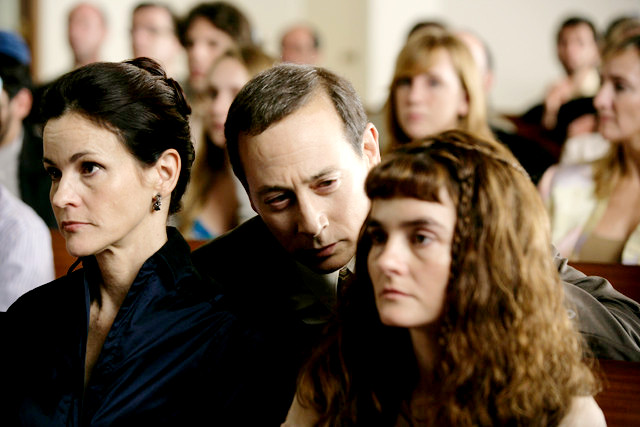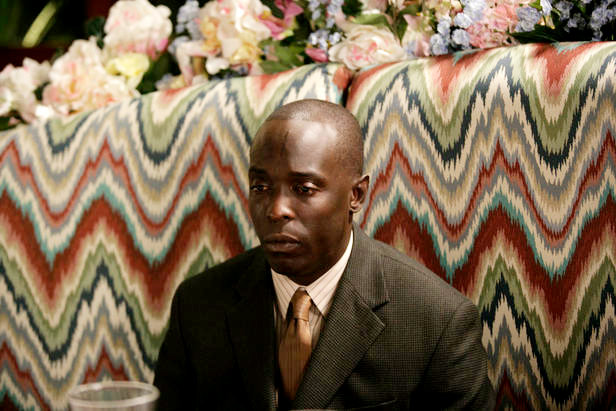
“This ain’t no party, this ain’t no disco. This ain’t no fooling around. No time for dancing, or lovey dovey — I ain’t got time for that now.” Ten years after 9/11, and twelve years after we last followed their…exploits, the collection of lost souls and tragic deviants that populated the pitch-black comedy Happiness have returned, sadder and wiser, in Todd Solondz’s Life During Wartime, an episodic, intermittently successful meditation on guilt and forgiveness. And, if nothing else, it’s safe to say the decade since we saw them last has not been kind to them, or their respective quests for contentment.
For all its bleakness, misanthropy, and inordinately dicey subject matter — pedophiles, obscene phone callers, suicides, and whatnot —Happiness, I am sure some of my fellow social misfits out there will agree, was a very, very funny film. It’s sort of a high-wire suspension act over a moral and existential abyss, and all the more hilarious because it constantly flirts with disaster. (If you haven’t seen it, the entire movie is on Youtube for some reason.) Alas, somewhere along the way — probably 9/11, it seems — the bottom seems to have finally dropped out of Solondz’s world. And now, rather than just trying to be happy, the damaged, compromised characters of the first film are sifting through the wreckage of their lives, trying to either pick up the pieces or bury them somewhere they can’t be found.
As a result, Life During Wartime is a subtler and more muted affair, and one that, unfortunately, is nowhere near as viscerally engaging as its predecessor. If the first film made the case that everybody, even the sick and twisted among us, are looking for happiness in their own way, Wartime suggests that everybody, no matter how reprehensible, also needs forgiveness, and finds forgiveness equally hard to grant. Arguably, Solondz is making the same argument as last time — In both films, basic human needs trump moral and political considerations. (In the end, terrorists, like pedophiles, are people too.) But Wartime has neither the manic good cheer nor the jet-black satirical zest of the first installment, and the laughs are definitely fewer and farther-between. I appreciated the film by the end, but it’s also overly didactic at times and, at times, quite frankly, a bit of a slog.
If you do decide to see Life During Wartime, I would highly recommend watching Happiness again beforehand. Having not seen the first film in a decade or so, I only realized after the fact — like, when writing this review — that the opening scene in Wartime deliberately echoes the pre-title vignette from the earlier movie. Except now, Jon Lovitz’s character is dead (but returns here nonetheless as Paul Reubens), Jane Adams’ Joy has become even more ethereal and bird-like in the guise of Shirley Henderson, and she’s somehow ended up with Phillip Seymour Hoffman’s obscene phone caller, Allen — now recombinated as Michael Kenneth Williams (Yep, Omar comin’) — whom she met as part of her job rehabilitating criminals. (Much like how she ended up with Jared Harris’ sketchy Russian emigre in the first film.)
Things, we soon discover, are not well between Joy and Allen on the domestic front, prompting the former to go visit her older sister Trish (once Cynthia Stevenson, now Allison Janney) in Florida. But Trish has her own problems: Trying to get back into the dating scene — she just wants to find a nice, normal Jewish guy, not unlike her new beau Harvey (Michael Lerner) — Trish finds that her younger children are starting to ask uncomfortable questions about the deeds of their dead father (once Dylan Baker)…who is not really dead, physically-speaking.
Rather, he’s been serving a decade-long stint for rape and pedophilia, during which he’s filled out and been weighed down by guilt enough to transmogrify into the consistently haunted Ciaran Hinds. Free once more, Bill wants to reconnect with the son (Chris Marquette) he sinned against all those years ago. But, as you might expect, that might make for a rather touchy father-and-son reunion…
In following the various characters from Happiness as they interrogate or shrink away from their ghosts, Life during Wartime hangs together less well than the original movie, and feels much more choppy and episodic. At one point, Joy goes out to California to see her other sister Helen (Once Lara Flynn Boyle, now Ally Sheedy), and, while it’s not a bad scene per se, it sorta feels thrown in just so the middle sister didn’t get entirely neglected. (Spoiler: She ended up with Keanu, who honestly doesn’t seem too happy either.) Then again, episodic can be good too — In a brief turn as a self-proclaimed “monster” in need of a good-time-man at the local watering hole, the inimitable Charlotte Rampling just about walks away with the movie.
Still, while I appreciated elements of Life During Wartime, I never really felt fully engaged by the movie, and can’t really recommend it, overall. As the miserable folks on-screen kept circling back to the same questions of guilt and forgiveness, the movie came to seem less like a cinematic experience and more just a filmmaker’s position statement, a dry academic treatise of sorts. And while there are moments of humor here and there — Lerner’s grown son (Rich Pecci) gets in a few good laughs in particular — none really compare to the often absurd, occasionally stunning shenanigans of the first film.
Life During Wartime‘s biggest draw in the end is that it allows us, a la The Godfather III or Before Sunset, to catch up with memorable characters we shared some moments with a long while ago. And, given that they inhabit a world created by Todd Solondz, I guess it’s no surprise that, in the end, living only left them sad.

